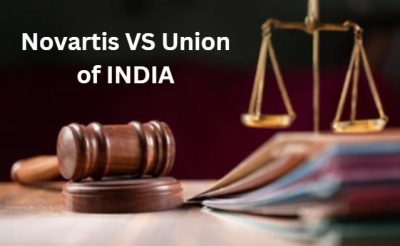INTRODUCTION
The judgment of the Supreme Court of India in the case of Novartis vs Union of India, 2013, marked a milestone at the interface between intellectual property law and public health. This landmark case has shifted thinking with respect to the perception of pharmaceutical patents vis-à-vis their impact on access to lifesaving drugs. In that respect, the case raised serious questions about patenting practices and implications for drug affordability in emerging international markets.
MAIN BLOG
Novartis AG, a Swiss pharmaceutical company based in Basel, Switzerland filed for patent protection in India for its cancer drug Gleevec, generically known as imatinib mesylate. Gleevec is a critical treatment for CML, a kind of cancer that starts in the blood and bone marrow. Novartis submitted a patent application regarding the beta-crystalline form of imatinib mesylate before the Indian Patent Office in 2006, claiming that the beta-crystalline form was more stable and had higher bioavailability than that already known to be in the alpha-crystalline form.
However, the Indian Patent Office denied Novartis’s application to patent under the group of Section 3(d) of the Indian Patent Act. This was enacted-through the amendment in 2005-to prevent “evergreening,” wherein a pharmaceutical company files a patent application over the same invention with minor changes in order to extend its market exclusivity and thereby prevent others from selling the drug for a longer period of time than what is required for the protection of intellectual property, without offering an improved therapeutic benefit.
Legal Arguments
Novartis thus contended that increased stability, solubility, and bioavailability imparted by the new beta-crystalline form made the present crystalline form of imatinib mesylate substantially an improvement over the existing one. They thus argued that these improvements were sufficient to meet Section 3(d) of the Patent Act, which requires “enhanced efficacy” in granting exclusivity for a patent.

The Indian Patent Office and public health advocates operating argued that the beta-crystalline form not much more offer a significant therapeutic advantage over the existing form. They thus contended that such new form did not meet Section 3(d) requirement for enhanced efficacy and, besides, allowing that patent would extend Novartis’s market exclusivity, possibly leading to higher drug costs to patients .
Supreme Court’s Judgment
In a landmark judgment during April 2013, the Supreme Court of India had justifiable cause to confirm the refusal by the Patent Office to grant Novartis a patent. The Court accepted even though the beta-crystalline form had certain technical improvements, they did not relate to increased therapeutic efficacy. It said that Section 3(d) was interpreted to prevent small changes from getting patent protection and to ensure that patents were granted to only genuine inventions with significant therapeutic benefits.
Key Implications of the Court’s Decision:
- The decision was to reinforce the strict criteria under section 3(d) for patenting, wherein incremental innovations would have to be substantially beneficial therapeutically to fall within the ambit of patent protection.
- This was viewed as an important victory for public health, in as much as generic versions of imatinib mesylate would be assured to which access by the large number of patients in India is crucial.
- The judgment has received widespread international interest and has formed part of ongoing debate on the balance between intellectual property rights and access to medicines. The case underlined the challenges faced by developing countries in ensuring access to lifesaving drugs that are both innovative and affordable.
Impact on stakeholders
- The judgment had been a critical warning for Pharmaceuticals regarding the limits of patent protection in India. It outlined the need for true innovation and not changes incrementally and thus changed the strategy by which corporations pursue researching medication and patenting methodologies.
- This judgment benefited generic drug manufacturers, who were able to continue to make and sell imatinib mesylate at lower prices, improving access to this essential drug for patients.
- The judgment reinforced the stand of public health groups battling for affordable medicines and changed the paradigm on patent laws in relation to global health.
CONCLUSION
The Novartis versus Union of India case is a landmark from the point of view of intellectual property law, particularly within the pharmaceutical sector. It reconfirmed the interpretation of Section 3(d) of the Indian Patent Act through the judgment of the Supreme Court, and it underlined that a balance between patent protection and requirements of public health has to be found. The case has remained a significant referent in global debates on pharmaceutical patents and access to medications, an example of the very sensitive balance between innovation and accessibility.
Author: H.N.Mallika, in case of any queries please contact/write back to us via email to chhavi@khuranaandkhurana.com or at Khurana & Khurana, Advocates and IP Attorney.



